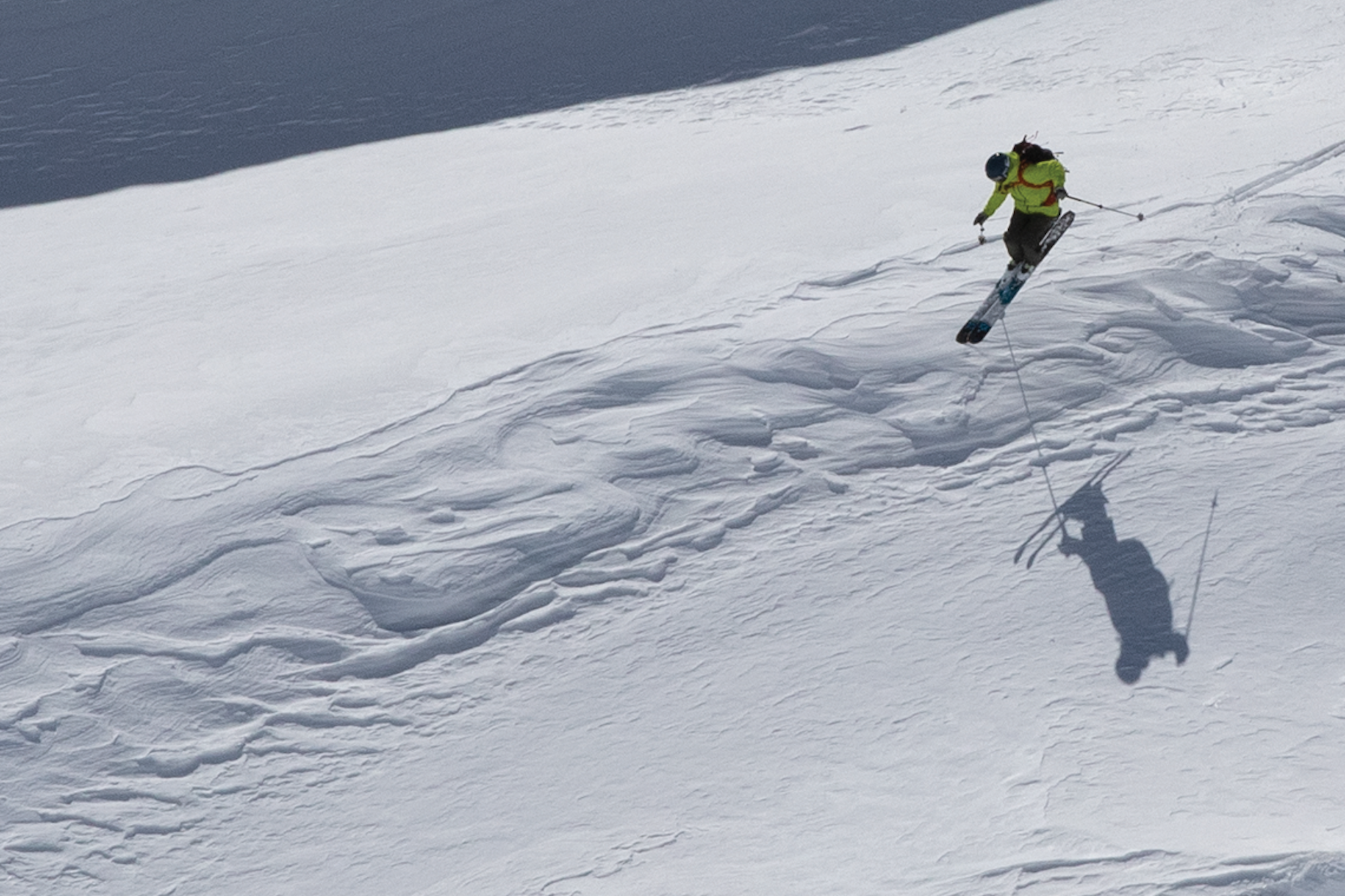FEATURED IMAGE: Jeff Cricco, San Juan Mountains
The last few weeks have been some of the most productive of my life. Sheltered in a small house, I’ve learned how to bake sourdough, mastered kettlebells, cruised a coding class, reorganized my gear (twice), built a website, finished taxes, framed a greenhouse, read three books and walked my dog twice a day. Well, that included a few exaggerations, but the point stands.
Over the last five years, I’ve been fortunate to harvest more corn than most of my Midwestern cousins. I’ve skied off a dozen PNW volcanoes from Shasta to Baker, crossed the High Sierra on skins, followed friends around the Tetons and Wasatch, toured in Lofoten, Rogers Pass, and the Beartooths, and led a sail-to-ski trip along the BC Coast. The two-month window from early April to June is probably my favorite time of the year. Stable conditions, long days and predictable weather is a great formula for fun. But this season has been vastly different.
As a corn-always-trumps-powder aficionado, a year sabbatical from spring skiing hurts. Still, I’ll be the first to admit that not skiing at all is the right thing to do. Potentially adding to an overtaxed healthcare system is, frankly, selfish. And, with ski season indefinitely postponed, I have a lot of free time to kill. What’s the second best thing to booting up a couloir in shorts and Hawaiian shirts? Nerding out about the perfect corn quiver.
Patagonia Upstride Kit
Available Fall 2020
It’s spring, so you’ll want to leave your three layer Gore-Tex at home. With warmer weather and little to no precip, you’ll be happier in a soft shell with long leg zips and more stretch. This new kit from Patagonia is comfortable and breathable, has large pockets for skins and snacks, and is surprisingly burly, doubling as a warm climbing or mountaineering shell, too.
Faction Skis Agent 3.0
Buy Now — $524.00
Faction Agent 3.0. All skis are not created equal and this applies ten-fold to touring skis. A full carbon ski is great for floating in a foot of fresh, but less awesome for a 4,000 foot descent on variable ice and crud. The Agent 3.0, which I was given a first-chance to try this season before it launches this fall offers surprising stiffness that’ll help avoid chatter from top to bottom. Sure, it’s a little heavier and wider than traditional peak-bagging corn skis, but the ensured fun on the downhill is well worth it.
Marker Alpinist 12
Buy Now — $449.00
My philosophy with ski gear is search out something that works well, then try to cut weight—if you want to go uphill faster, the answer is better conditioning and cardio, not lighter gear. The Alpinist is a fully-featured pin binding, skis through rough snow with a smooth feel and still on the lighter end of the binding spectrum. And, compared to other ultralights, it transfers power much better.
Arc’teryx Procline AR Carbon
Buy Now — $900.00
Before you grab pitchforks, here’s the caveat: this isn’t my daily driver during winter. The Procline is geared for long spring tours: stiffer and stronger than previous iterations with manageable power transfer, the real value is the 77 degrees of vertical rotation and 36 degrees of lateral will help you move faster uphill, saving your energy for descents.
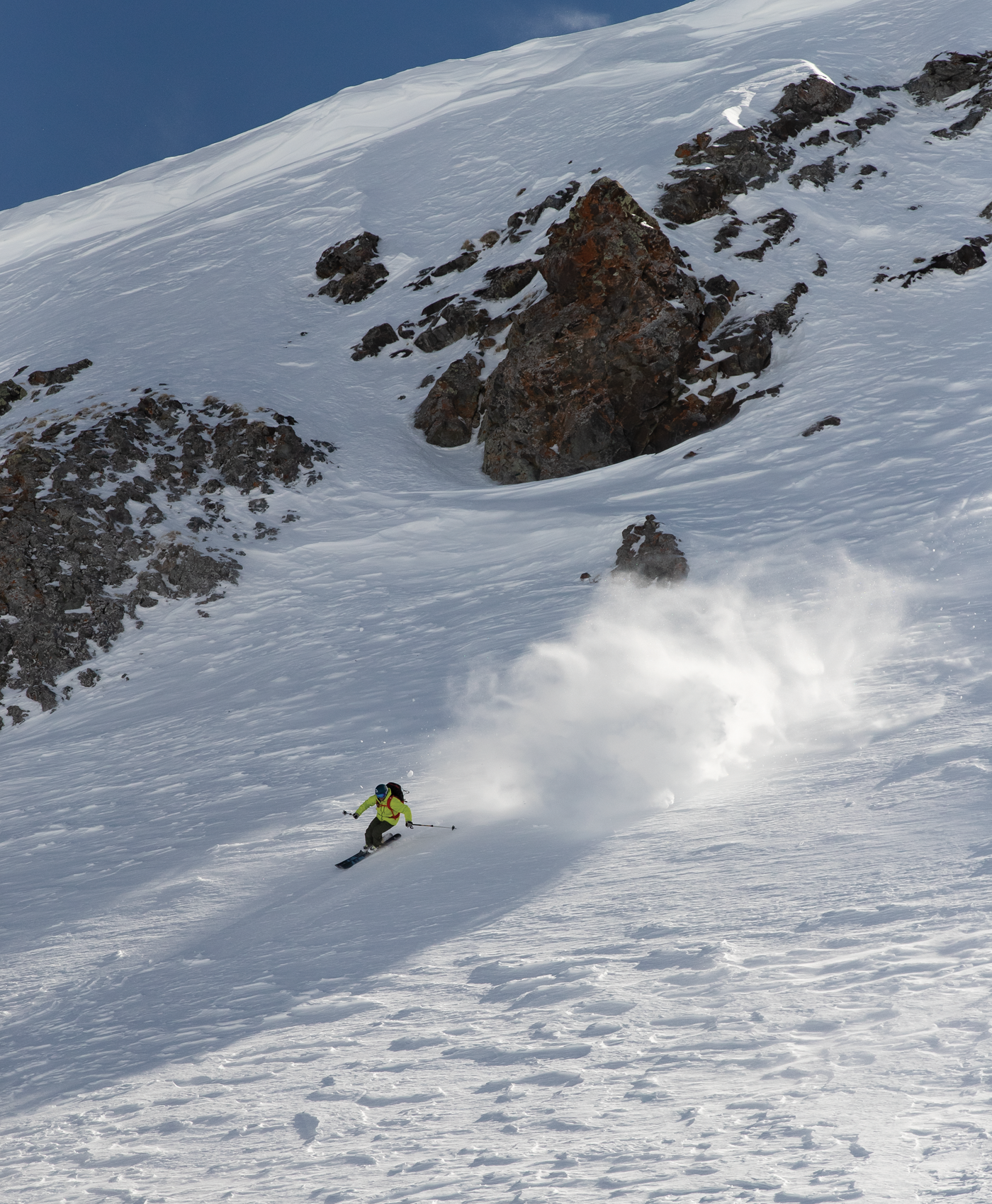
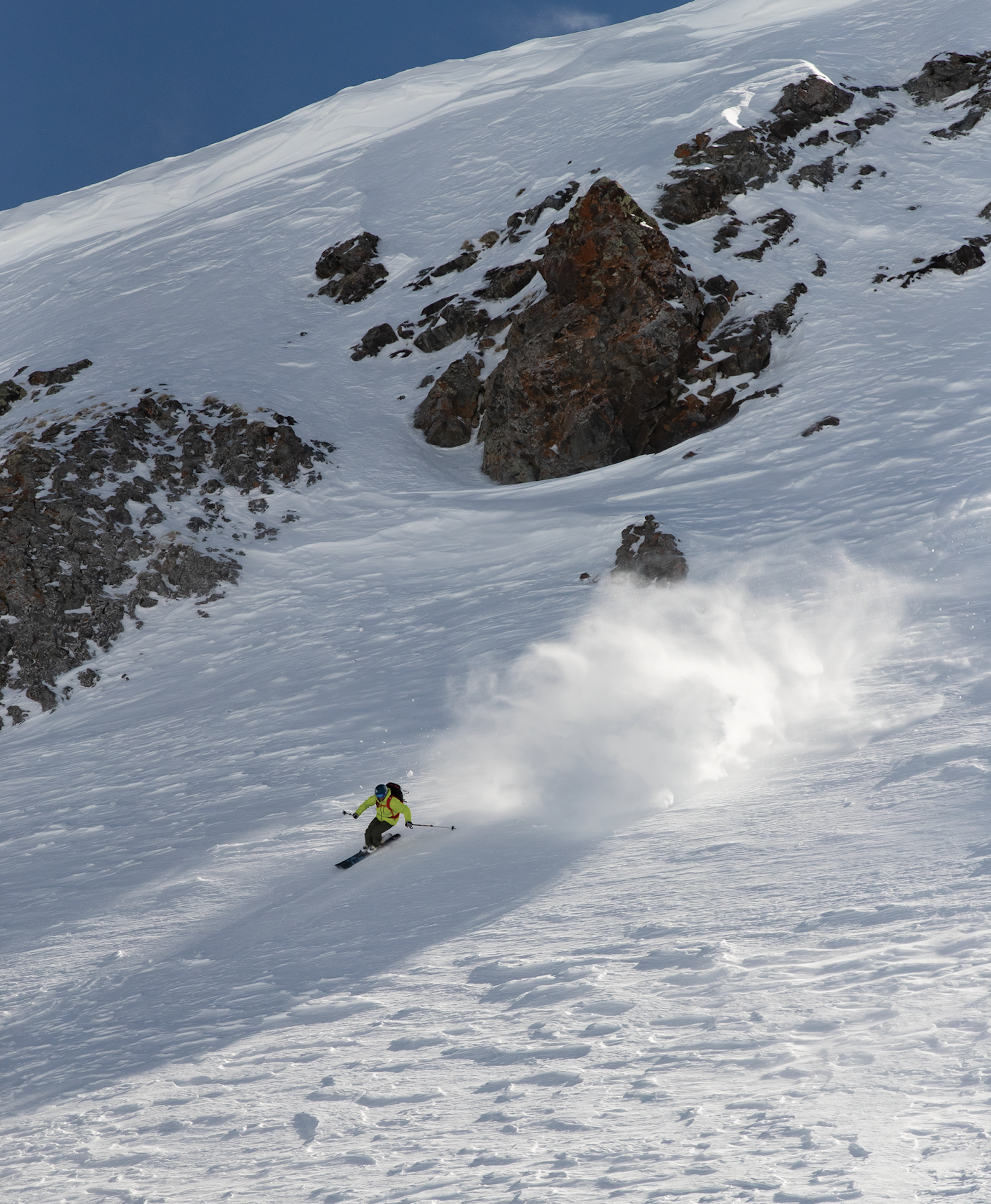
A backcountry skier descends on spring snow in Colorado’s San Juan Range.
Mammut Pro X 3.0
Buy Now — $769.95
Even in the spring with an increasingly stable snowpack, the data is clear—airbag packs help your chance of survival if caught in a slide. The Pro X is my pack of choice, for a few reasons. It’s more affordable than competitors, has a removable canister so you can pack it in your checked luggage an ensure there’s no trouble getting through airport security and a slew of smaller features: a rear zipper for quick access, goggle pocket, and easy-to-use ski and helmet carries.
Mammut Barryvox S
Buy Now — $499.95
Avalanche beacons have come a long way in a short period of time. Many top-shelf transceiver options are quite similar, but the Barryvox has become my go-to because it offers more functionality than its competitors and has a remarkably long search range. Unlike other options, it does have a longer learning curve, so I’d suggest you practice a few times at home first.
Smith Vantage MIPS
Buy Now — $182.00
Even when going light and fast, bringing a proper ski helmet is a must. I can’t imagine skiing a consequential line without some noggin protection. For my spring tours, I rely on Smith’s Vantage, which has adjustable vents that breathe remarkably well on warmer spring days. Its BOA fit system is easy to use with just the turn of a dial, the goggle clip provides no-slip placement and included MIPS technology that protects against rotational impacts offers top-class security.
Julbo Rush
Buy Now — $110.00
Stealing a page from a cycling playbook, I use a quick-reacting photochromic lens on most tours, especially in mixed conditions. Julbo’s Rush transmits between 12% and 87% of the light that hit them at an impressive speed–it’s hard to notice the lenses changing their tint. The Rush are comfortable enough to wear on full day out and cover enough of the face to be used in place of goggles on short descents, too.
Petzl Swift RL
Buy Now — $119.95
Your headlamp dying on an early morning skin track is no fun; the Swift RL helps you avoid just that. More expensive than most lights, the extra investment offers Reactik lighting, which automatically adjusting brightness on ambient surroundings. For instance, if you’re skiing with others or if the sun begins to rise, it’ll dim the light to save its batteries. Combine this technology with 900 lumens and a long-lasting battery, and you’re ready for most big tours.
Petzl Ride
Buy Now — $124.95
The lightest ice tool that still features a full steel head, the Ride is surprisingly versatile and ideal for ski mountaineering. The pick is sturdy enough to handle glacial routes and steep climbs with hard ice and rock, and it’s reasonably ergonomic to for most skiing and mountaineering, but if you’re getting into true, vertical ice climbing, find an axe that swing cleaner with a bit more weight. As one of the lightest axes on the market, it’s excellent to use during most alpine adventures, it’s easy to stow and it won’t add much weight to your pack.

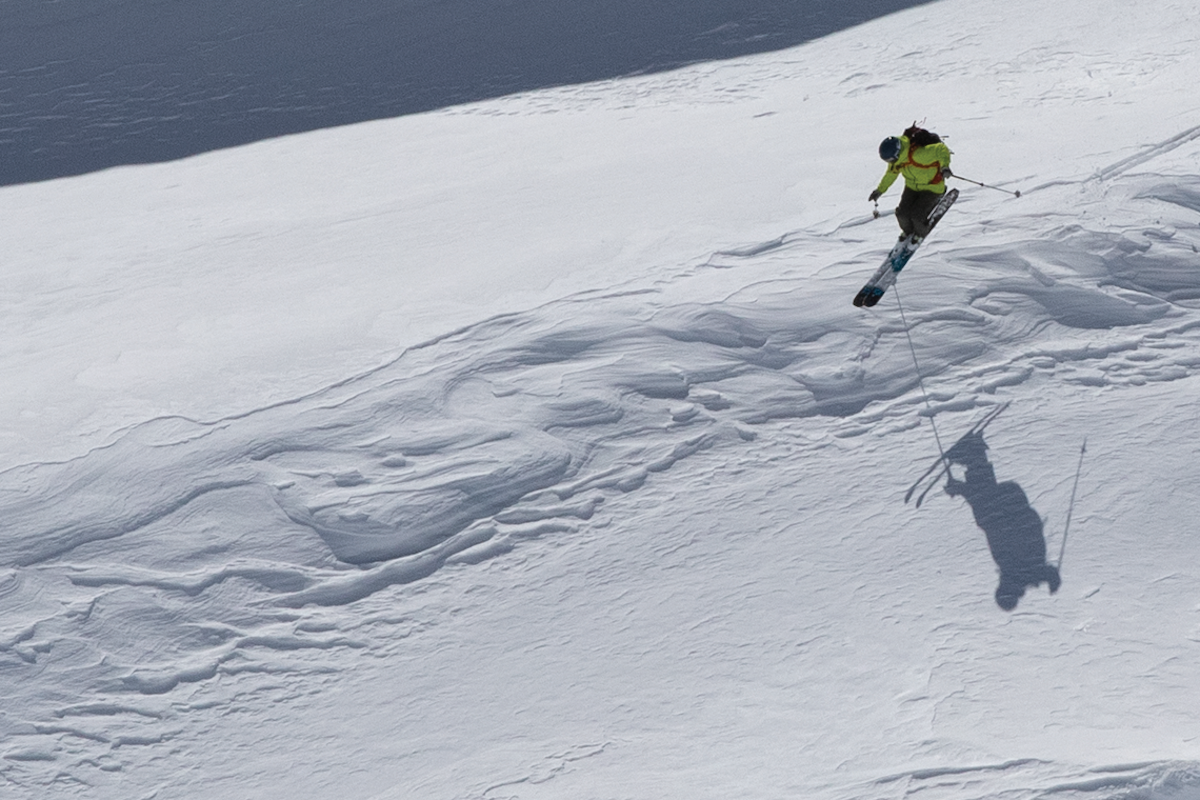


![[GIVEAWAY] Win a Head-to-Toe Ski Setup from IFSA](https://www.datocms-assets.com/163516/1765920344-ifsa.jpg?w=200&h=200&fit=crop)
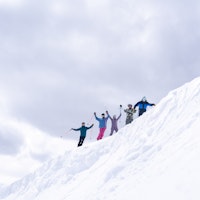
![[GIVEAWAY] Win a Legendary Ski Trip with Icelantic's Road to the Rocks](https://www.datocms-assets.com/163516/1765233064-r2r26_freeskier_leaderboard1.jpg?auto=format&w=400&h=300&fit=crop&crop=faces,entropy)
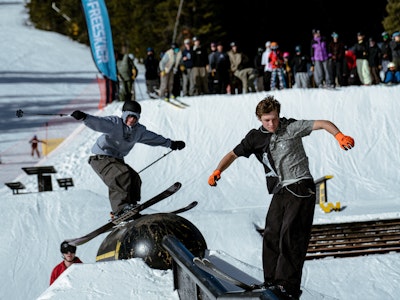




![[GIVEAWAY] Win a Head-to-Toe Ski Setup from IFSA](https://www.datocms-assets.com/163516/1765920344-ifsa.jpg?auto=format&w=400&h=300&fit=crop&crop=faces,entropy)

